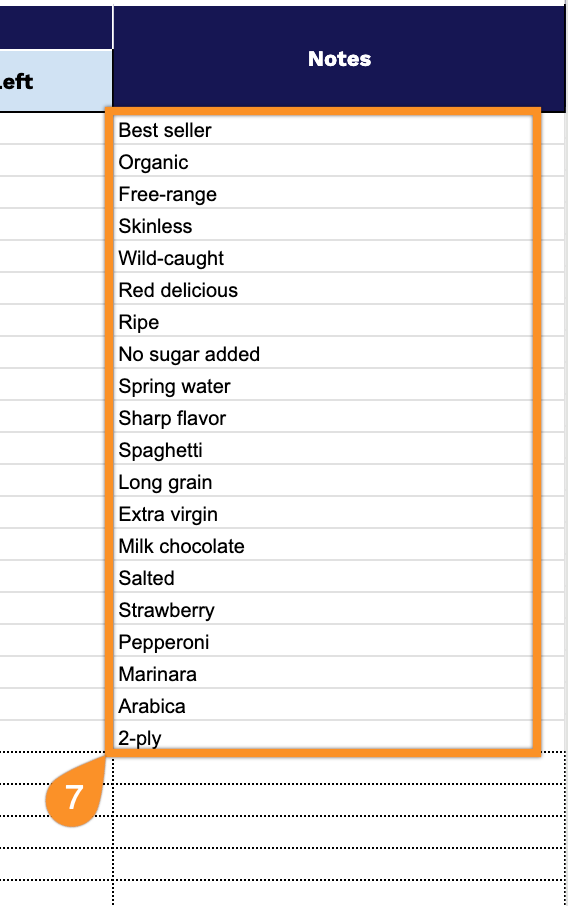Your kitchen holds more surprises than it should. That mystery dates back three months. The third bottle of soy sauce you didn’t realize you had. The vegetables that went bad before you remembered to use them.
A grocery inventory spreadsheet may sound overly meticulous, but it’s actually one of the simplest ways to take control of your food budget and avoid wasting money. Our free template works in Google Sheets, Excel, and PDF format, giving you a clear snapshot of everything you actually have before you head to the store.
The result? You’ll stop overbuying, catch expiring items in time to use them, and finally know whether you need milk without having to open the fridge door. It’s not about being perfect. It’s about being practical.
Quick Jump
ToggleWhat Is a Grocery Inventory Spreadsheet?
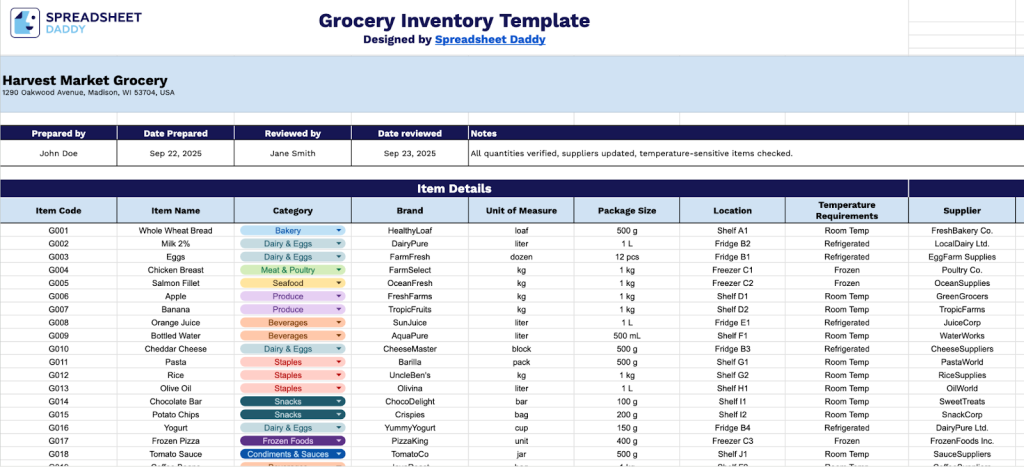
A grocery inventory spreadsheet is a simple yet powerful tool that helps you organize and monitor the food items you have on hand.
By creating a digital record of your pantry staples, refrigerator contents, and freezer items, you can shop more efficiently, avoid buying duplicates, and ensure nothing expires before you use it.
Download Spreadsheet Daddy’s Free Grocery Inventory Management Spreadsheet
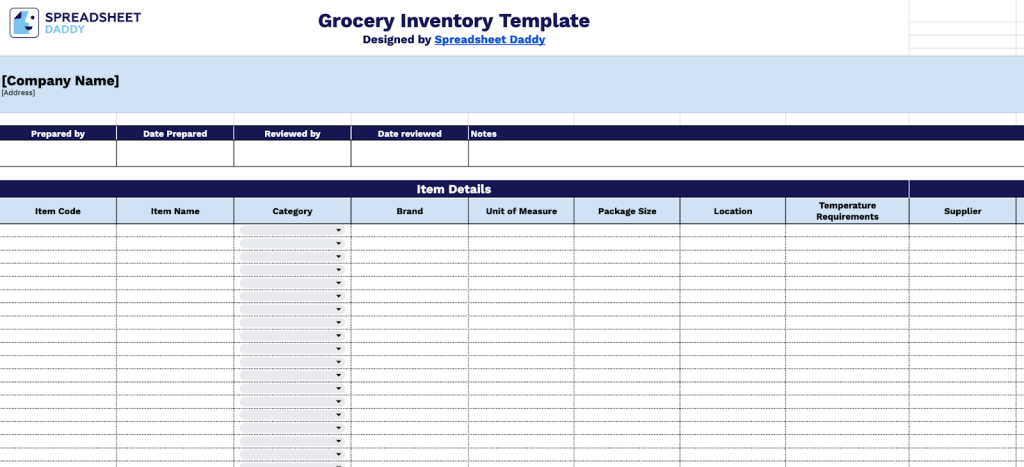
Our comprehensive grocery inventory template helps you track food items from the moment they arrive until their expiration date.
The template is flexible and can be tailored to suit your business by adding or removing columns as needed, making it ideal for restaurants, cafeterias, grocery stores, and other food service operations.
What’s included
- Comprehensive item tracking system: The template includes detailed fields for Item Code, Item Name, Category, Brand, Unit of Measure, Package Size, Storage Location, and Temperature Requirements. This ensures every product is fully documented with the specifications needed for proper handling and organization.
- Built-in supplier management: Track vendor contact details and lead times directly in the template. This helps streamline ordering processes and maintain consistent supplier relationships without requiring additional documentation systems.
- Real-time inventory monitoring: Features Quantity on Hand, Par Level thresholds, Unit Cost, and automatically calculated Total Value columns. These metrics provide instant visibility into stock levels and total inventory worth, making it easy to identify when items need to be reordered.
- Expiration and freshness tracking: Includes Date Received, Expiration Date, and Days Left columns to effectively manage product shelf life. This helps reduce waste, ensure FIFO rotation for perishables, and maintain food safety standards.
- Professional administrative framework: The header section captures Company Name, Address, Prepared By, Date Prepared, Reviewed By, and Date Reviewed fields, plus a dedicated Notes column for item-specific observations, special handling instructions, or quality concerns. This ensures proper documentation and accountability for inventory management.
How to Use Our Grocery Inventory Spreadsheet Template
1. Select how you’d like to use the template: replicate it in Google Sheets, download as Excel, or save to PDF.
2. Input your enterprise designation, premises location, and inventory controller details, accompanied by the date of completion. List the supervisor’s full name and examination date. Use the Notes field to record any additional information.

3. Complete the Item Details section by entering all essential product identification and classification information:
- Item Code: Enter the unique SKU or identifier assigned to track this specific grocery product.
- Item Name: Record the complete product name as it appears on packaging or in your system.
- Category: Specify the classification group for this item (Produce, Dairy & Eggs, Meat & Poultry, Bakery, Seafood, etc.).
- Brand: Include the manufacturer or brand name of the product.
- Unit of Measure: Set how the item is counted or sold (each, pound, kilogram, case, etc.).
- Package Size: Document the quantity or weight contained in each package unit.
- Location: Add the storage area or aisle where this item is kept in your facility.
- Temperature Requirements: Specify the required storage temperature zone (e.g., frozen, refrigerated, room temperature, etc.).
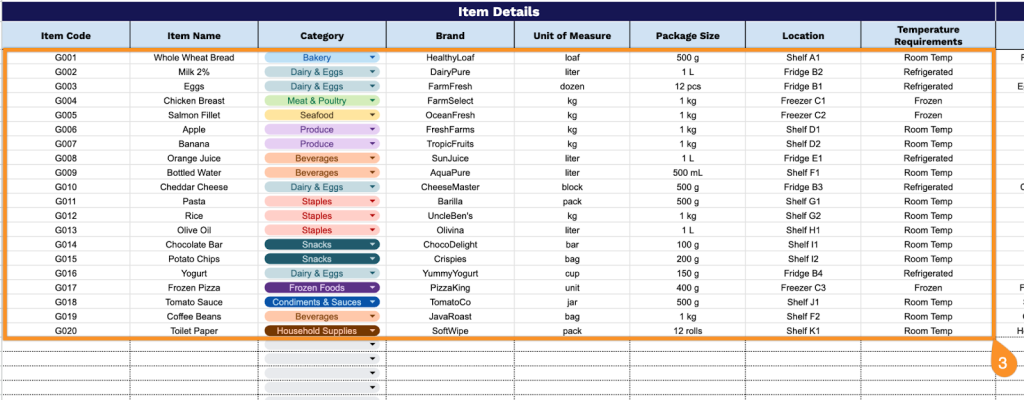
4. Fill in the Supplier Info section by documenting all vendor relationships and ordering details:
- Supplier: Enter the name of the company or distributor that provides this product.
- Contact Details: Provide the phone number, email address, or representative information for placing orders.
- Lead Time: Record the typical number of days required between ordering and receiving delivery.
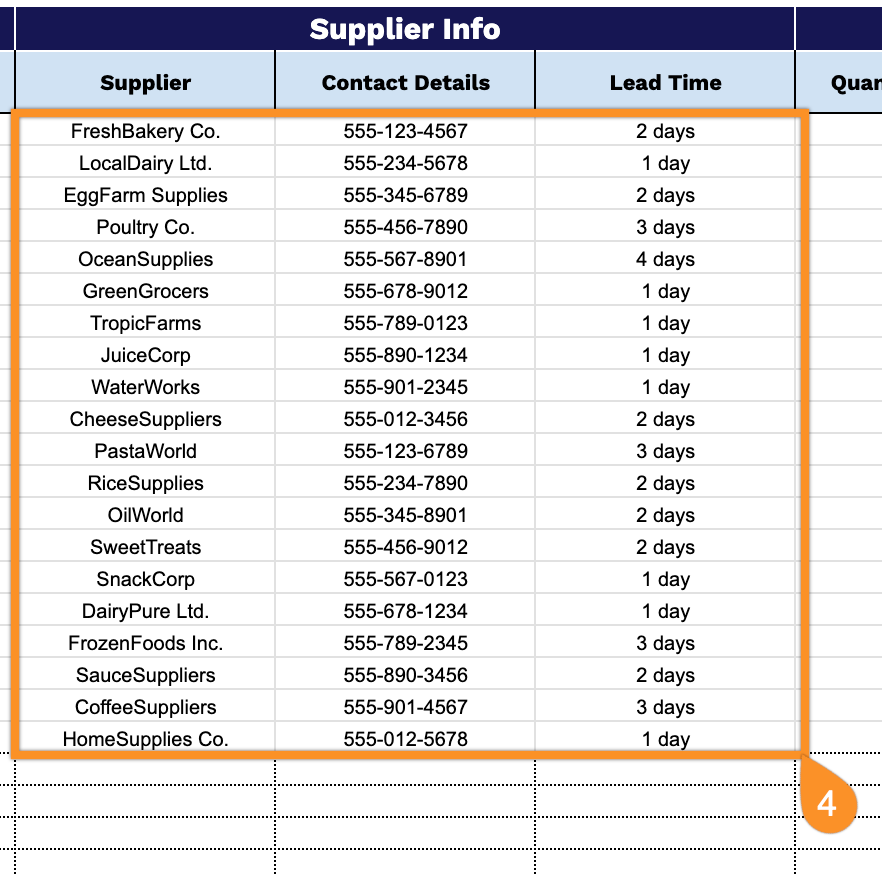
5. Manage stock levels in the Inventory Tracking section for accurate quantity and cost monitoring:
- Quantity on Hand: Enter the current number of units physically available in your inventory.
- Par Level: Specify the minimum stock quantity that should be maintained before reordering.
- Unit Cost: Include the price paid per individual unit or package of this item.
- Total Value: The template automatically calculates the combined worth of all units currently in stock.
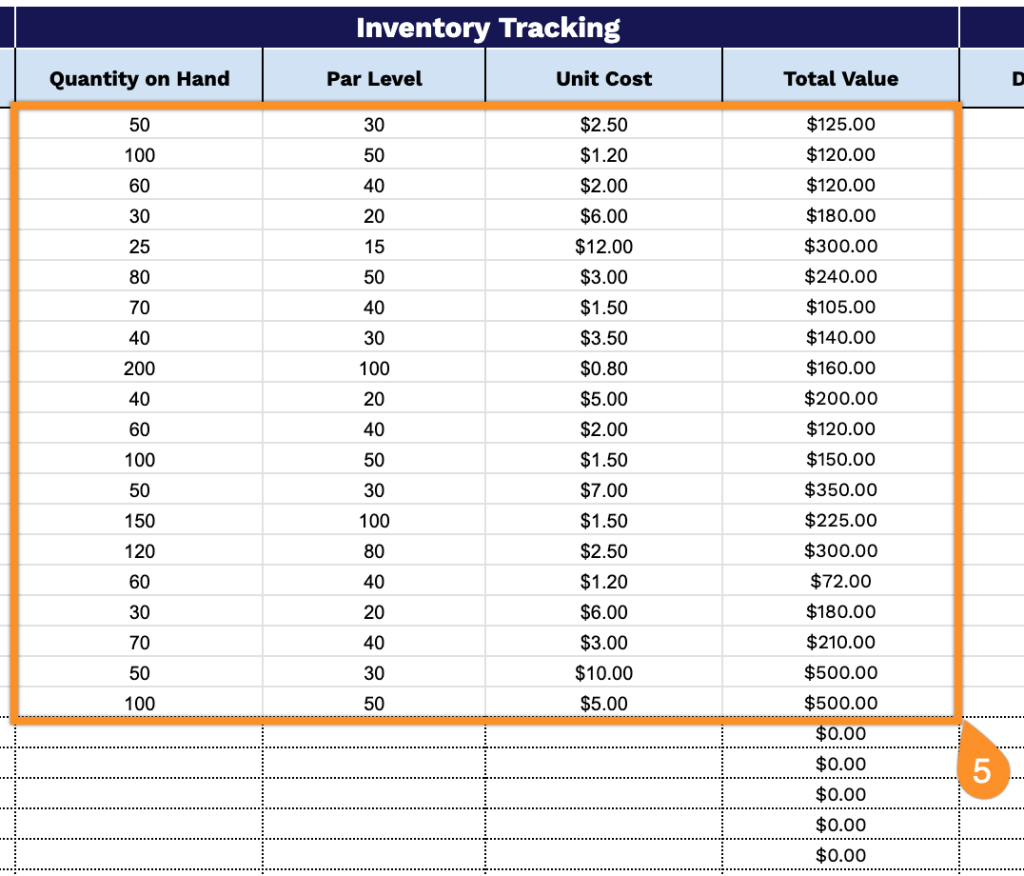
6. Monitor freshness and compliance in the Date-Specific Tracking section to ensure product quality:
- Date Received: Record when this inventory batch was delivered to your facility.
- Expiration Date: Document the manufacturer’s expiration or “best-by” date, as printed on the product.
- Days Left: The template automatically calculates the remaining time before the product reaches its expiration date.

7. Use the Notes area for any special remarks or additional data.
